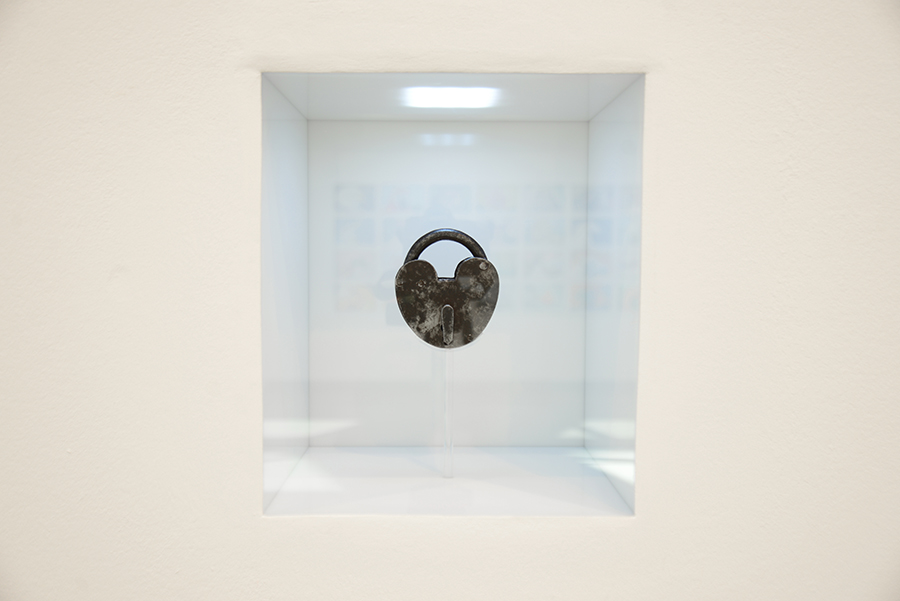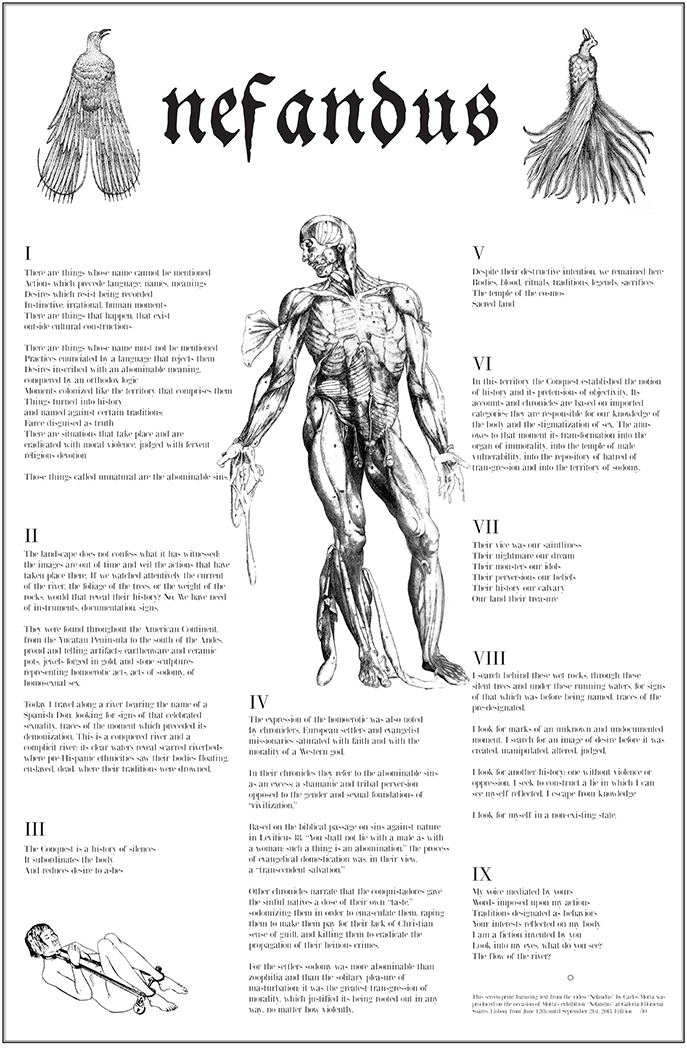Nefandus was an exhibition project at Galeria Filomena Soares in Lisbon in the summer 2013. The project explores the imposition of European epistemological categories onto native cultures during the Spanish and Portuguese Conquest of the Americas. This projects includes photographs, sculptures and a video, all of which address subjects that were deemed “exotic,” “wild,” or “native”.
The project’s central axis is Nefandus (2013) a narrative video that investigates pre-Hispanic (homo)sexuality. While it has been widely documented that the conquistadores used sex as a weapon of domination of indigenous populations, little is known about the homoerotic indigenous traditions. How did the Christian morality, as taught by the Catholic missions and propagated through war during the Conquest, transform the natives’ relationship with sex? Nefandus, Latin for impious, abominable, or unnamable, was a common word used in Colonial Latin America in reference to sin. A pecado nefando (unspeakable sin) was a transgressive crime of sexual nature, such as sodomy, which was severely judged and punished. The video suggests that constructions of sexuality and the body can’t be projected onto cultures whose traditions and histories remain unknown and have been mediated by European classifications.
Watch a video of Carlos Motta describing the installation of Nefandus at the PinchukArtCentre, Kiev here


video room
Nefandus, HD 16:9. video, color, sound, 13:04′
Other works question the project of modernization by means of elegiac depictions of failure. Like Shipwreck (Santa Maria)(2013), a small sculptural replica of Christopher Columbus’ largest ship, severed in the middle, reminiscing of its shipwreck near the island of Hispaniola – an event that would prevent the ship from ever returning to Spain; or Taxonomy of the Wild (2013), a large grid of photographs of crumbling murals that depict animals whose faces and bodies appear in different stages of decay. The photographs bring to mind idealized notions of what was perceived as “wild” within colonial societies.
Nefandus is also composed of works that refer to techniques for subjugation of indigenous groups. The installations The Spirit and the Flesh and Instrument represent instruments of torture developed during the Spanish Inquisition; and the photographs Colonial Forts depict views of the horizon over the ocean through the windows of colonial forts – spaces often used as defense strong holds and to control the distribution of native and slave labor.
Nefandus asks what would be the consequence of reclaiming historical categories and inscribing them with new meanings – through speculation, research or imagination – in order to gain greater social freedom for the present.
Exhibition views at Galeria Filomena Soares, Lisbon (June- September 2013)

Exhibition space 2

The Spirit and the Flesh, vinyl on floor, 45 x 40″

Shipwreck (Santa Maria), replica of Columbus’ ship

Instrument (16th Century padlock inserted in wall)


My dearly beloved R. (Monument to Alexander von Humboldt), 4 archival inkjet prints, 56 x 34


Untitled (date unknown) (hand carved penis in glass vitrine)












